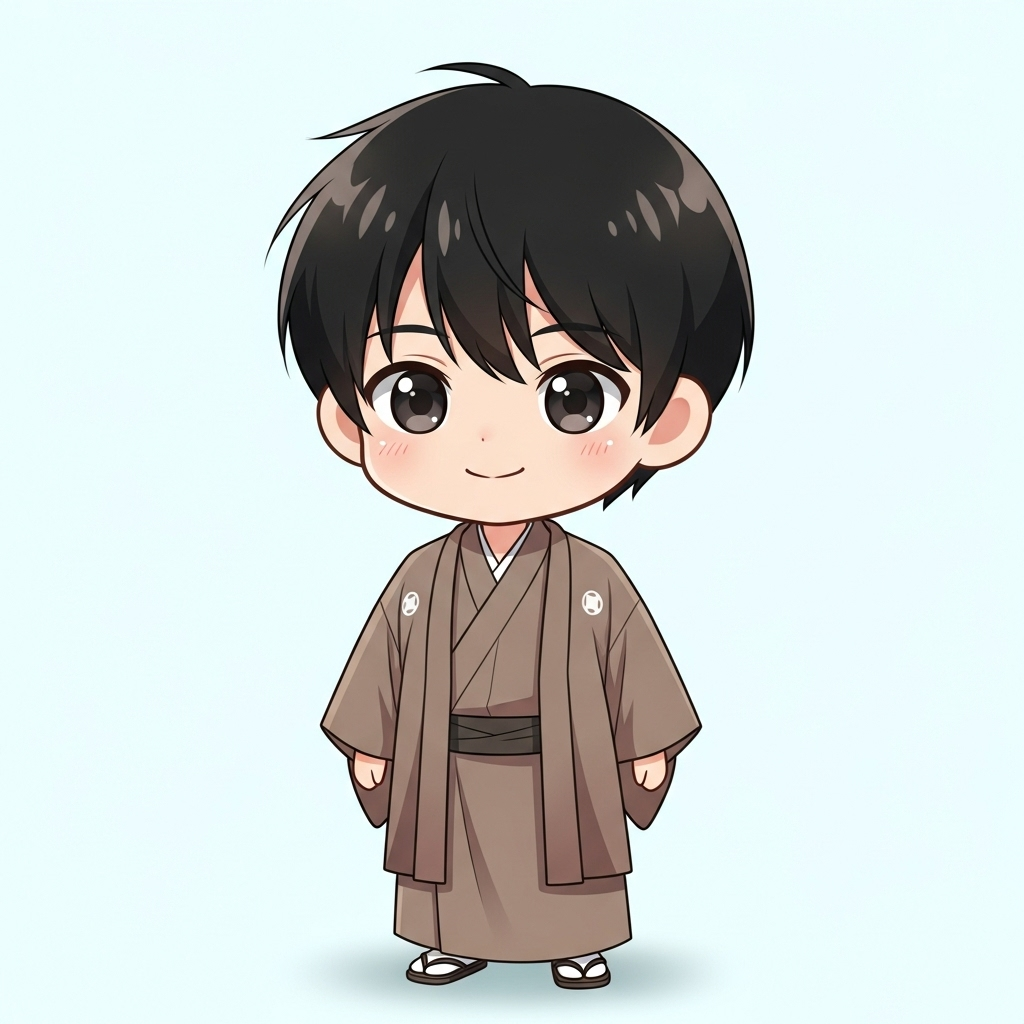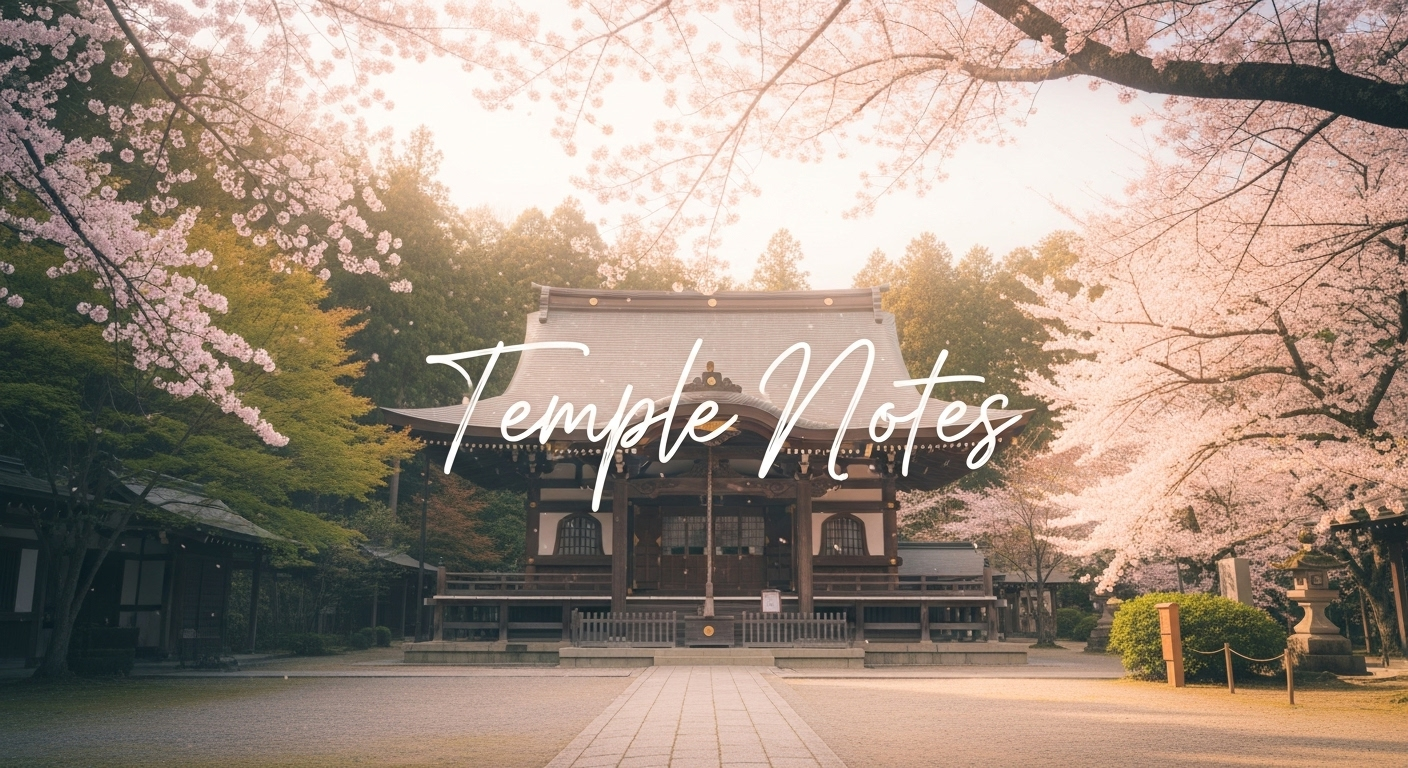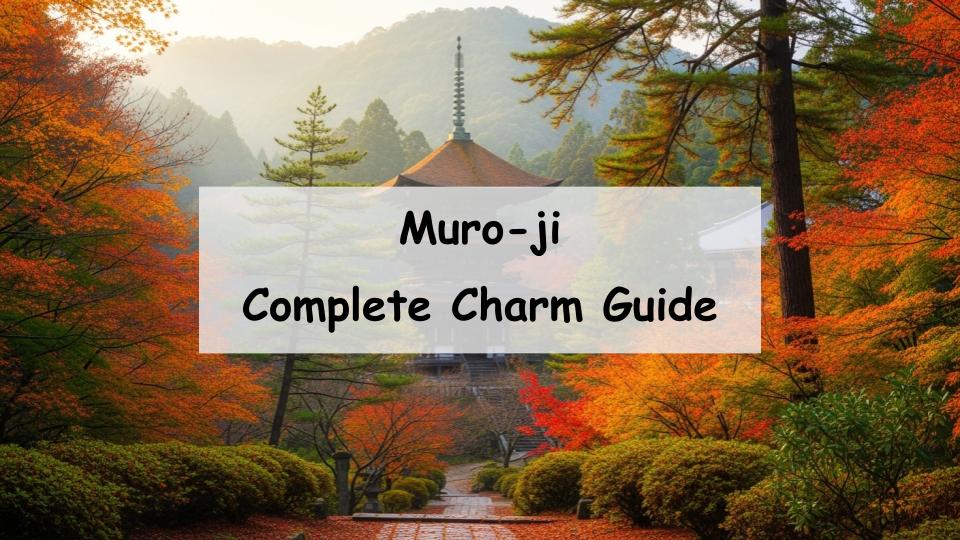Nestled in the quiet mountains of Nara, Muro-ji Temple often piques curiosity. You may wonder, “What kind of temple is Muro-ji? What are its highlights? How do I get there?” This article provides detailed answers to those questions, offering a full guide to Muro-ji’s unique features, must-see spots, and access information. From its harmonious blend with nature to Japan’s smallest five-story pagoda, and its historical openness to female worshippers, this guide will equip you with everything you need to know to fully enjoy your visit to Muro-ji Temple.
- What is Muro-ji? Exploring Its History and Characteristics
- Highlights of Muro-ji: What Not to Miss
- How to Get to Muro-ji and Nearby Attractions
- Visiting Muro-ji: Tips and Etiquette
- How to Make the Most of Your Visit to Muro-ji
- Conclusion: Muro-ji Is a Treasure of History, Nature, and Culture
- A Message from the Guide
What is Muro-ji? Exploring Its History and Characteristics
The Origins and Historical Background of Muro-ji
Muro-ji Temple, located in Uda City, Nara Prefecture, is the head temple of the Shingon Muro-ji sect of Buddhism. It was founded in the late 8th century by a monk named Kenkyo and later associated with the famous monk Kukai (Kobo Daishi). Built deep in the mountains, Muro-ji served as a training ground for a blend of esoteric Buddhism and Shugendo (mountain ascetic practices). Despite natural disasters and periods of unrest, many of its cultural assets have been preserved for centuries.
Why Muro-ji is Known as the “Koya for Women”
During a time when women were not allowed to enter Mount Koya, Muro-ji became a rare exception—a sacred training site open to women. This earned it the nickname “Nyonin Koya,” or “Koya for Women.” That welcoming spirit continues today, making it a place where all visitors are embraced regardless of gender. Its inclusive philosophy is one reason Muro-ji remains beloved by so many.
Architectural Style and Cultural Significance of Muro-ji
Muro-ji’s buildings are beautifully integrated into the surrounding natural landscape. Its layout follows the slope of the mountain, enhancing the spiritual experience as you ascend through the temple grounds. Among its architectural treasures is the five-story pagoda, a national treasure and the smallest outdoor pagoda in Japan. Other important buildings like the Kondo (main hall) and Hondō (ceremonial hall) hold significant religious and artistic value, many of which are designated Important Cultural Properties.
Highlights of Muro-ji: What Not to Miss
The Five-Story Pagoda: A National Treasure
Standing just 16 meters tall, Muro-ji’s five-story pagoda is the smallest of its kind in Japan but no less magnificent. Surrounded by cedar trees, its graceful presence blends perfectly with nature. Visitors are often captivated by its serene beauty, and upon closer inspection, the intricate wooden craftsmanship becomes apparent.
The Kondo, Hondō, and Other Main Structures
The Kondo dates back to the early Heian period and houses the principal image of Shakyamuni Buddha along with other important Buddhist statues. The Hondō, rebuilt during the Kamakura period, serves as a site for esoteric rituals. Each structure tells a story of religious devotion and centuries of history.
Enjoying Muro-ji’s Seasonal Natural Beauty
Spring: Rhododendron Blossoms
Spring transforms Muro-ji into a colorful paradise, especially from mid-April to early May when rhododendrons bloom throughout the grounds. Their delicate pink petals line the stone steps and frame the wooden buildings, creating a truly picturesque scene.
Autumn: Breathtaking Fall Foliage
In autumn, vibrant red and orange leaves envelop the temple grounds, particularly around the five-story pagoda. The sight is breathtaking, especially in mid-November, and attracts photographers and nature lovers alike.
Best Photo Spots Within the Temple Grounds
There are many photogenic spots within Muro-ji, including the stone stairways, moss-covered paths, and the pagoda framed by trees. As the natural light shifts throughout the day, so does the atmosphere, offering endless photo opportunities.
How to Get to Muro-ji and Nearby Attractions
Public Transportation Access
From Kintetsu Osaka Line’s Muro-guchi Ono Station, take a Nara Kotsu bus to the “Muro-ji” stop. From there, it’s about a 5-minute walk to the temple. Visitors from Osaka, Kyoto, and Nagoya can easily access the area by train and bus.
Access by Car and Parking Information
If traveling by car, take the Meihan Expressway and exit at Ogura IC. Muro-ji is about 30 minutes from there. Several paid parking lots are available near the temple, although they may fill up during peak seasons such as autumn foliage.
Nearby Sightseeing and Local Dining
The surrounding area offers more to explore, such as Muro Ryuketsu Shrine and the outdoor sculpture park “Muro Sanjo Park Art Forest.” After your visit, enjoy local specialties like handmade soba and mountain vegetable dishes at nearby restaurants.
Visiting Muro-ji: Tips and Etiquette
Confirm Opening Hours and Admission Fees
Muro-ji is generally open from 8:30 a.m. to 5:00 p.m. The standard admission fee is 600 yen for adults, though seasonal changes or special exhibitions may affect pricing. Always check the official website for the latest information before visiting.
Temple Etiquette: Maintaining Silence and Respect
As a sacred site, Muro-ji emphasizes peace and quiet. Visitors are asked to refrain from loud talking or phone use. Photography should be done respectfully, without flash or tripods. The key is to be mindful of others and the spiritual nature of the setting.
Rainy Days and Crowded Periods
Rain can make the stone steps slippery, so wear non-slip shoes. During busy seasons such as spring and autumn, visiting early in the morning allows for a more relaxed experience with fewer crowds.
How to Make the Most of Your Visit to Muro-ji
Recommended Itinerary for First-Time Visitors
Start from Muro-guchi Ono Station, take the bus to Muro-ji, and explore the temple grounds. Afterward, consider visiting nearby Muro Ryuketsu Shrine and enjoy a local meal before returning. This balanced day trip offers history, nature, and local flavor.
Best Time for Photography and Nature Lovers
Early morning provides soft light and sometimes a lingering mist, adding a mystical touch to photos. Weekday mornings during spring blooms or autumn foliage are especially rewarding for photographers and nature enthusiasts.
Nearby Temples to Visit Alongside Muro-ji
Other temples such as Hase-dera and Ono-dera are also worth visiting. Each offers its own unique charm and pairs well with a trip to Muro-ji, especially during the changing seasons.
Conclusion: Muro-ji Is a Treasure of History, Nature, and Culture
A Recap of Muro-ji’s Timeless Appeal
With over a millennium of history, stunning architecture, and a deep connection to nature, Muro-ji is more than just a temple—it’s an experience. Whether it’s the symbolic pagoda, seasonal beauty, or spiritual calm, Muro-ji leaves a lasting impression on every visitor.
Key Takeaways for Planning Your Visit
By knowing how to get there, what to see, and how to respectfully engage with the space, your trip to Muro-ji will be smooth and meaningful. Use this guide to prepare and enjoy one of Japan’s most serene and inclusive temple experiences.
A Message from the Guide

It’s a wonderful place where history and nature are beautifully intertwined.








Comment